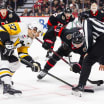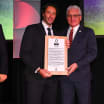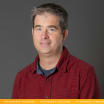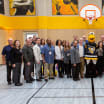Ten Years of In the Room: An Oral History
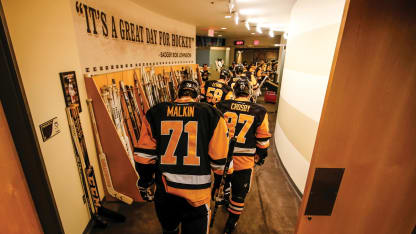
10 Years of All-Access.
— Pittsburgh Penguins (@penguins) August 3, 2021
10 Years of Player Mics.
10 Years of Bloopers.
We're celebrating a decade of In The Room with 10 special video segments. Stay tuned for more. pic.twitter.com/mnYlfulxM4
In 2008, Penguins president and CEO David Morehouse had a conversation with NHL COO John Collins, who had previously worked at NFL Films. Morehouse had always admired how NFL Films would put together season recaps that slowed the game down and created specific narratives around teams.
Morehouse: "When I was a kid, I would rather watch those than watch an NFL game. So John and I talked a lot about how hockey was missing that, and how most of our shots were getting the tops of the players' heads from a television angle. We didn't have a lot of ice-level shots; we didn't have those super slow-motion shots that NFL Films had."
NFL Films is also widely known for teaming up with HBO to produce the reality documentary series 'Hard Knocks,' which was first broadcast in 2001. It follows an NFL team through its training camp and gives an unfiltered, all-access look at their preparation for the upcoming season. That type of behind-the-scenes coverage was unheard of in the NHL at the time.
Matt Cullen, Penguins forward from 2015-17 and '18-19: "It's funny. When I started in the league, man…like if there was a camera in the room, nobody said a word. The culture was so different back then. Cameras were not really welcome. Everything was quiet, everything was secret. It was like anybody from outside the locker room was an enemy, in a way."
Sidney Crosby, Penguins captain: "I remember for All-Star games or certain things, you'd have a camera in the room for a big night, but it wasn't a daily thing. It was always something really big. There was a reason for it. It almost felt like there was a lot of permission needed, and it just felt different. So it's obviously changed over time, but earlier on, I think that was always kind of a really unique thing when you had a camera in the room."
Morehouse: "The locker room had a padlock on it. People weren't allowed in there. We're trying to grow the game, we had just come out of a lockout in '05, and had these bright young stars in Sidney Crosby and Evgeni Malkin, Jordan Staal, Kris Letang. There was Ovi in Washington and other young stars around the league. So we needed to be able to showcase that talent, and we needed to keep up with the other sports, which were doing more and more of a variety of production to draw the audience in."
Collins later approached Morehouse with an idea that would be the catalyst for changing that culture. He wanted the Penguins, who had won the inaugural Winter Classic against Buffalo on Jan. 1, 2008, to participate in a second one against Washington on Jan. 1, 2011. But this time, with a camera crew from HBO following them around during the weeks leading into it - literally 24/7.
Morehouse: "John said, 'This will bring that idea that you and I have been talking about to fruition. We'll have a crew from HBO travel with the team. They'll be in the locker room. You'll be able to edit things and make sure you have final say on what gets in the show and what doesn't. But it'll be a whole new level of access.' So we said yes."
On Sept. 23, 2010, it was announced that HBO Sports would be taking its 12-time Emmy Award-winning series "24/7" franchise into the hockey world for the first time, joining forces with the NHL for "24/7 Penguins/Capitals: Road to the NHL Winter Classic" - a four-episode, all-access reality series.
Dan Bylsma, Penguins head coach, 2009-14: "It was a revelation. You're going to have cameras around all the time. They're going to be in meetings, they're going to be in the dressing room, they're going to be around between periods, they're going to be on the ice during practice, they're going to be traveling with you. It was scary to start with."
Marc-Andre Fleury, Penguins goaltender, 2003-17: "At first, I wasn't too excited about it. I just didn't like having cameras around all the time, watching everything you do and everything you say, right? But the HBO guys were really professional, easy to get along with. They just blend in and after a couple of weeks, you don't even notice them anymore."
And that point was driven home when the first episode premiered on Dec. 15, 2010. It featured moments like Bylsma addressing the team, reading the lineup and grading players with general manager Ray Shero; Penguins defenseman Deryk Engelland getting in a fight and subsequently needing stitches while wearing a microphone; and the players with their families at the annual Christmas party.
Bylsma: "Once we saw the first HBO show, we realized they weren't there to catch you in a bad moment; they weren't going to expose you in a negative way. It was to shed light on the team, the players, the individuals and what you were going through. In very short order, the cameras became a part of the team. They were a part of our group, and they were with us at all times."
Jen Bullano Ridgley, Penguins Vice President of Communications: "The reviews and the raves from HBO 24/7 were through the roof. I mean, our guys had a blast. It wasn't the ending we wanted, but it didn't end there. We knew then that we needed to jump on that. We needed to seize it. We needed to find a way to make that something that was normal, something that was part of our team."
Morehouse: "We decided since our players were used to it, our hockey ops people were used to it and our fans were starting to get used to it, that we could do our own. And we could probably do it better than anyone else could, because we know our team better than anyone else. So we got our production people together, and we hatched the idea of In the Room, and the coaches were very cooperative. The general manager at the time was Ray Shero, and he was very cooperative. And everyone saw the value of it."
Bylsma: "Ray hadn't ever been in the dressing room when I was addressing the team. So for the GM of the team, that was the first time he'd seen what was happening in there. The game was exposed in ways that all of us, regardless of our position, saw something new because of the exposure the cameras were giving in different aspects. So it was almost natural for us to go from 24/7 to In the Room, because we had been a part of that and we had those cameras in the room, and we were just going to our team producing it. It was natural for our guys to do it, and I do think it continued to show parts of the game that everybody maybe hadn't seen, but were interested in. It was a great thing for our group."
The Penguins brought in Leo McCafferty, a Pittsburgh native who had been a producer at NFL Films, to oversee the creation and production of In the Room. It debuted during the 2011-12 season, and there was certainly a bit of an adjustment period going from having cameras around for a full year instead of just one month.
McCafferty: "I was coming from a place where we were sort of given full autonomy, and we had already earned the trust of the team and the staff and the players coming from the NFL world. When I got here, I realized that we needed to do that. Because without their trust in me and in us, we wouldn't be able to be given the access that we ultimately wanted. So I give full credit to them, because they allowed us to still be there and still be part of it, and they allowed us an opportunity to earn their trust. The walls were there, but we slowly started chipping them away."
Bullano Ridgley: "For example, with the training staff, injuries were very sensitive. At the start, that was something that we really learned to deal with. Now, we could spend the whole morning with a guy that's injured and rehabbing, and they would know that nothing that can't see the light of day will ever see the light of day. But at the beginning, it was a leap of faith."
Jason Seidling, Penguins Director of Team Operations: "I know it was tough in the early going. It was just so different having people embedded in the room like that. But if you were going to call the show In the Room, you needed to go in the room. And sometimes you had to remind these guys that for the authenticity of the show and what we're trying to do, we needed to let the crew actually get some great stuff, things that fans never see. They saw a little bit in 24/7, but we needed to expand and continue showing them more for this thing to work."
The show did have some growing pains in the first season, particularly during their first attempt at putting a microphone on a player during a game. It fell off of Penguins forward Steve Sullivan in the middle of play.
Tweet from @penguins: In The Room creator, Leo McCafferty: "In the early years of the show, there were guys that were a little bit cautious about what they said and how they acted... That wasn't the case with Pascal Dupuis."@Duper0009, what a legend 😂 pic.twitter.com/6G8wWZwHeg
Mark Cottington, PensTV producer: "As he went into the offensive zone, I noticed his microphone pop out of his pads. I'm seeing this pack just dangling from him, and I'm just like oh, boy. Here we go. The other team starts going the other way and he's skating backwards trying to defend, and it's still dangling. He finally pulls on it and rips it off onto the ice, and you're like all right, well, that's done. You see someone push it over to the ref, and your heart sinks, because it's like you're interfering with the game when you're trying so hard not to."
McCafferty: "I thought it was going to be our last-ever player mic after how it went down. Thankfully, all that came of it was the ability for us to actually purchase a good microphone that could be worn by players on the ice that would have a lot more durability and would stay on much better than the microphone that we had."
And for the most part, the positives far outweighed the negatives in the early going. Particularly as the players really and truly began to buy in, especially veterans like Pascal Dupuis and Marc-Andre Fleury.
McCafferty: "Pascal Dupuis was as advertised, whether he had a mic on or off, whether he was with us or not. He was kind of the life of the team during those years. He was a little bit older, so he was comfortable. He was always joking around, and he provided some good light-hearted moments. He allowed us places, kind of opening the doors for other players to say, okay, well, if he's doing this, it might be all right."
Dupuis: "When I had the mic on, most of the time, I would forget I had it on. Basically, the little personality and the accent that I have speaking, me being involved with the guys vocally and physically a little bit - messing around with people, being a little bit of a trickster - I guess it made for some okay TV."
Seidling: "Flower was perfect for the show, too. That was great because this was one of your legit star foundational players, and not only was he providing highlights on the ice, but he was able and willing to help carry the show off the ice."
Bullano Ridgley: "Flower's pranks were probably one of the things that kept the show going at the beginning. He didn't like to tell us he was doing stuff. There were times where I would get calls, like why didn't you tell In the Room that was happening? Well, because he didn't want anyone to know! He was being Flower; he was being mischievous."
Fleury: "Sometimes I wished the cameras weren't around, because sometimes I do pranks and you guys were always there watching, so then you knew who did it."
In the second season, In the Room transitioned from a webisode-only show to a TV show. After filming had been a group effort between staffers who had other responsibilities during the first season, they brought on Jon Otte as a producer solely dedicated to In the Room.
Tweet from @penguins: In The Room... The locker room that is, NOT the restroom. pic.twitter.com/vCZBc7nlWM
The Penguins hired Andrew McIntyre in the same capacity for the third season, and the more those two were present, the more comfortable the players became.
Bullano Ridgley: "Having the same couple of people around, it just gave that familiarity, that trust. They're part of the group. The guys know them, they talk to them. At the beginning, it was like, oh, here's the camera again. I often felt bad, like, these poor guys have to be up in their faces all the time. The players aren't going to like them. But they did it in a way that was graceful, and they put them in a light that they love. They did good by them, and they did right by them. And now they look back, and they see it and enjoy it."
Dupuis: "If we didn't have the confidence in what they were going to put out there, obviously we would have not been as outspoken or outgoing with the cameras on our faces. The trust is right there. So I think that's why it makes for a great show like that."
McCafferty: "It speaks to the quality and professionalism of our staff, where they have blended in with these guys in a way that not only are they trusted, but they're invited in."
In those early years, the show mostly remained In the Room and in the rink. Putting those microphones on coaches and players during games was a big focus, and remains so to this day.
Player mics be like: #$@&%*!
— Pittsburgh Penguins (@penguins) August 17, 2021
Behind the scenes for mic'd up moments ⬇️ pic.twitter.com/zSG9gt2fic
McIntyre: "Most players are a bit indifferent to it. They're not excited to wear it, but they play along and they understand that it's part of the job."
Bryan Rust, Penguins winger: "I never feel bad about wearing it. It gives the fans a different perspective of the guys' personalities, how they are during the games and on the ice. The staff does a pretty good job of taking out things that shouldn't make it. It's definitely fun seeing that footage when it comes out."
McIntyre: "And it's nice because you do have guys that are totally willing to wear the mic, to the point of stepping up to wear it in the case that other people don't want to wear it."
Bullano Ridgley: "When Duper left, Patric Hornqvist took over as the guy who would say, 'Give me the mic. I'll wear it.' If there was a time where things were slow or maybe things weren't going the right way and it was going to be tough - it was always 'no, no, I'll take it.' And he would get the guys fired up with it. And I mean, he's always pushing the envelope, but he always brought it those games when he had the mic. He got the guys fired up, and it was fun. It was never about him, though. It was about how it brought the team together."
Hornqvist: "I just like to wear it. Obviously I say some crazy things out there, and I'm emotional on the ice and I got a big personality. At the same time, I think the fans like it and I like it, so why not wear it?"
The same couldn't be said for the legend that is Phil Kessel, who is the only player that successfully managed to avoid wearing a microphone during his entire tenure with the Penguins organization.
Bullano Ridgley: "My biggest regret is not listening to Carl Hagelin and Nick Bonino about secretly putting a microphone on Phil Kessel's shoulder pads, because we all got great pleasure in the days where Haggy and Bones were mic'd and Phil would find out."
Nick Bonino, Penguins forward from 2015-17: "We tried to get close to Phil and get his thoughts on things, because you'd get a pretty unfiltered view of whatever he thought."
Kessel: "The stuff I say, I don't want people knowing what I say, right? I don't know. I just talk some crap and do whatever, right? So I don't want anyone to hear the BS I spit."
Crosby: "I respect the fact that he held strong on it, and he didn't just say no a couple times and then finally cave in. He stuck with his no. And if somebody else was mic'd in the room, you always knew. I sat close to him, so he'd always give me a heads up. He was always looking out for me. I'm with him on that for holding his ground, for sure."
With hockey players being a superstitious bunch, and the Penguins being a notoriously superstitious team led by their notoriously superstitious captain, the microphones have become a part of that.
Bullano Ridgley: "The captain, he just knows. There's days where I say, 'Mic tonight?' And I get just a thumbs up or a wink or the head nod. Because he knows. We don't talk about it."
Crosby: "For me personally, I like the raw emotion, the intensity of a game. I'm so in the game when I play, a lot of times when it comes to plays and things like that, I'll remember everything, but I don't necessarily remember my interactions all the time. It's awesome footage to have. It's a unique look into all those things and just how invested everybody is into the game. I think it's pretty cool to see that."
Bullano Ridgley: "Sid is the prime example for everything we do, so it's always my go-to, like, hey, come on. Sid will wear the mic. Geno wears the mic. It's not that it's non-negotiable. It's something that we do as a team. We all take turns, and it can only go so far."
Many times, it ends up working out for the best.
Morehouse: "You had Jake Guentzel mic'd up when he had four goals in a playoff game in Philly. I mean, that's like hitting the lottery. It was the perfect time at the perfect place with the perfect player. And he's talking about it, the other team's talking to him, he's talking back. It's just something that fans don't usually get access to."
McIntyre: "Jake's always a good mic. He might be a little resistant or put up a bit of a fight at first. But at the end of the day, it seems like he's always along for the ride. It was the most fun mic I've ever got to listen to live, because Jake just went off in that game."
Guentzel: "That was a game that I'll always remember, seeing the In the Room video after and just how exciting and emotional that game was for me personally, scoring four like that."
Bullano Ridgley: "I'm telling you, it works out. The hockey gods watch. This stuff - it plays itself out. They don't wear the mics to be the star and think I want people to see me, I want it to be about me. It just really does bring out the best in guys. Like when Rusty scored the game after having his son, they all knew he was mic'd. That was awesome for him, the Dad strength."
And if there is something that truly can never see the light of day, Sullivan has a quip lined up and ready to go that he's used multiple times with the crew.
McIntyre: "If Sully really lets one fly on the mic, he'll skate over and probably give you a raised eyebrow or two, then let you know that you need to bury that clip and bury the shovel that you used to dig the hole, too."
The microphones will always be a source of gold, along with the incredible ice-level shots that slow down the game and create a way for fans to really feel the moment. But as the show has evolved, the crew has been invited into so many places outside of the arena - like into players' homes with their families - that took the show to new heights in terms of showing them as human beings and not just as a name and number on a jersey.
McIntyre: "It can be a bit uncomfortable for someone to invite a camera crew into their home, but a lot of these guys are able to have an understanding that we're not just there for ourselves. In a sense, we're there for them, too. And I think a lot of players realize that we're capturing a special moment in their lives."
Bullano Ridgley: "The guys have done such a great job of making players clips and giving them the footage that's unseen of them with their kids. They've done such a great job of personifying them as dads and family guys. They love that stuff. And it's kind of an easy selling point now, to be like, this is footage that you will have forever."
Hornqvist: "We had (our second daughter) Vendala and then a couple days later, you guys came and we had a really good talk and interview. Then you get some photos of me, my family and my older daughter too, and that's always going to be there for us. So it was a special moment for me, and I'm pretty sure that the viewers liked it, too."
And the real turning point for that type of access came when Crosby invited the show's entire staff to Nova Scotia to film the first week of the inaugural Sidney Crosby Hockey School.
McIntyre: "It was really cool to be able to document that time and to create something to kind of show the hockey world who he was on more of a personal level, and go a lot deeper with the show than maybe anyone had envisioned before that."
McCafferty: "That was a watershed moment in terms of this show, in my opinion, because he opened these doors for us. They weren't necessarily closed before, but now they were wide open. And if Sid is walking up in the locker room talking to one of us, another player is all of a sudden a lot more comfortable doing something with us, because we've earned Sid's trust. Then we were invited back the following two seasons, which just so happened to be after back-to-back Cups."
Seidling: "During the first parade in Cole Harbour, for as much of a star as Sid is, the In the Room guys were as big of rock stars at this event as Sidney Crosby. Those guys had gone the year before to do a show, so they'd been there once, and Sid's family and friends were just so excited that the In the Room guys had returned for year two. I know to this day they still ask 'Hey, when are you guys coming up?'"
Crosby: "They're just part of the crew now. They'll always have a place to stay when they come to Nova Scotia, and they know that after all those celebrations. Hopefully we can get them here again for another one."
Having the crew around to film every second of those back-to-back championships in 2016 and '17 was something the players couldn't be more grateful for. The moments range from the hilarious, like Kris Letang reading the starting lineup in only a jockstrap during the 2017 Final…
Tweet from @penguins: The BEST of times.Here's a look behind the scenes that will definitely have you smiling from ear-to-ear ������ pic.twitter.com/ujY0IyKw44
Cullen: "Probably not something you'd want to see on TV (laughs). I don't know. He may think so."
…To the heartfelt, like Hornqvist getting emotional on the bench and the guys celebrating with their families on the ice, and everything in-between.
Crosby: "It kind of gives you the whole story. I think just all those special moments, all those snapshots in my mind, when I look back…to be able to have those captured on video, and have guys with the mics and those interactions on the bench and seeing Horny standing up crying after that game in Nashville…and Sully yelling at us with like 10 seconds left, we got a two-nothing lead and he's still freaking out like we might lose the game (laughs)…Those things just stick in your mind."
Crosby: "All those special moments, all those snapshots in my mind when I look back... to be able to have those captured, you're always going to have a part of that day with you."
— Pittsburgh Penguins (@penguins) October 8, 2021
So many special moments over the years, preserved for all of eternity. pic.twitter.com/OEcZKmoFhW
Ian Cole, Penguins defenseman from 2014-18: "Looking back, it's nice to have footage and content and audio of these memories that may fade over time."
Cullen: "When you're in that moment, you forget so much of the things that actually are going on around you. You're just focused on that one thing. It's really cool to come back and see it and hear what guys are saying and you just kind of can relive it on just a totally different level."
Sullivan: "When we had to put my dad in a nursing home, I used to go visit him every day. I asked Jen to send me the videos of the Stanley Cup runs that the crew put together, and I used to watch them with him every day. And he loved it. He had dementia. He was in and out. But when he was in - and there might be a minute and a half of a fleeting moment where he was actually with it and coherent - he got it. After my dad's funeral and the wake, my whole family went back to my house for pizza, and the grandkids got together and they put a slideshow together of my father. They put that stuff of when I was playing cribbage with my dad on the slideshow, and they lowered the music for that part. We showed that to probably 80 or 85 people that were my dad's friends, that didn't get a chance to see the In the Room stuff because they're not from Pittsburgh. And they loved it. It was pretty cool."
Now, the access and the credibility of In the Room has evolved to the point where it's not even a question as to whether a camera is going to be there for every moment, both on the ice and off the ice, even when there are management or coaching changes. In fact, Otte and McIntyre are often the first Penguins representatives to new meet members of the organization in person.
Tweet from @penguins: Our 'welcome to the team' greeting squad: the In The Room production crew. pic.twitter.com/NWrTCdKeWD
Otte: "The access couldn't be better. It's pretty cool we have the trust from hockey ops and the players to be able to do things like that."
McCafferty: "In my previous job, my mentor and the owner of NFL Films was Steve Sable. He used to have a phrase where he said, 'Let the tape flow like water.' And that was because you never know what you're going to capture, but if you're not rolling on something, you might miss something great."
Bullano Ridgley: "I remember texting guys during the Last Dance with Michael Jordan, 'Are you watching this? This is why there's cameras everywhere. Do you understand?' And other guys are texting me like, 'We have to have cameras around.' I think the Last Dance really showed us that if the cameras always rolling, years from now, it's really going to be priceless footage and things that you don't think of."
And what the In the Room producers do with all of that footage is create something truly special, for everyone inside and outside of the organization. It's had an incredible reach, with clips being posted on the Penguins' social media accounts and episodes airing on AT&T SportsNet and NHL Network.
Morehouse: "When it comes to hockey players and their superstitions and the closeness and the closed nature of what the room is, it's a tribute to the film crew and the production people of In the Room that it's lasted 10 years. Because there's not many people that get to step in that locker room. There's not many people that get access to the players' emotions. So I think In the Room has become, since its inception, the best behind-the-scenes look at who we are as an organization, who the players are as individuals, and who the team is…who the Pittsburgh Penguins truly are."
Seidling: "This show does really well for us. It's a great marketing tool for us. The fans really enjoy it, and makes them feel a part of the team."
Hornqvist: "For the fans, it must be incredible to see the guys so closely in practice, games, after the game, before the game. I think that's great. I wish I had something like that to watch when I was a kid, because I loved watching hockey, obviously, and then was a huge fan of everything in sports. Now, you almost feel like you can touch the players and you can be there with them when you see all the videos. That's a lot of credit to the crew, how those guys film. They're never in the way. They're always around, but on the side, and get those perfect moments. It's great, and the fans and the players are glad to have it, for sure."
Bonino: "I know personally, I enjoy seeing other guys around the league. Guys that maybe you hate on the ice, and then you see a different side of them where they're parents and they're actually good people. I think it does let people in. If you just embrace it and be yourself and give people a little glimpse of who you are, it can go a long way in building a relationship with fans and letting people know that there's more to you than just a guy on the ice."
Bylsma: "I actually get Pittsburgh fans throughout the world that sometimes comment on In the Room and what they saw. I have players now that want me to introduce the team like I did for what they saw on In the Room. One player in particular would always come up to me, and I always said 'Flower's in the cage' when we did the starting lineup. And he would always say, 'Who's in the cage tonight?' Not because he didn't know who was going to start in net, but because he wanted to hear me say 'Flower's in the cage,' or whoever would start in net that night."
Bullano Ridgley: "I'm really proud of the way it's evolved, because now, every team's doing it. Anytime we're in the playoffs or something like that, they bring in cameras. And it's not a distraction for our group. It's something they're used to, and that's something that you can't get overnight. It's something that we started and I'm proud to say that we were one of the first teams to do it, and I think it's morphed into something none of us ever thought it would be."
McCafferty: "To just go back to the beginning when it was kind of a bare-bones operation, and see where we've come, is something that's really remarkable to me. We've gone from a place where we were barely allowed in the locker room, to a place now where we've had young prospects come and they're getting a tour of the locker room and they're telling our staff oh, I know what's around this corner, because I've seen it on In the Room. That, to me, is just something that's pretty neat."
Morehouse: "In everything we've done with the Penguins, we've tried to give our fans more and more access. In the Room is a big tool in that toolbox of more access. We'll continue expanding In the Room and using social media to highlight different things. And we'll get more and more access as we move forward because of the success that we've had."
















